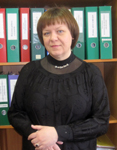Abstract
The article is dedicated to a highly topical issue of raising the effectiveness of teaching upper secondary school students with cerebral palsy foreign languages by means of the selection and classification of web applications. According to the Law of Ukraine «On General Secondary Education», SEND (special educational needs and disabilities) students can study in mainstream schools (and namely, in special / inclusive classes or in distant / evening / extramural educational settings), and also in special schools (meant for children who need special education due to their physical impairments or mental disability), among which there are also education-and-rehabilitation centers (for children who need regular rehabilitation because of the complexity of their impairments). The implementation of the Social model of disability, started in Ukraine, presupposes the gradual transition from segregation to inclusion of SEND children. It can be implemented by means of numerous adjustments in mainstream educational settings so that all the barriers are removed, unless the modification of learning is viewed as the best choice. Some of the adjustments mentioned can be introduced by means of web-applications interpreted in this research as users’ computer programs that empower them to solve certain tasks. Pursuing the aim of the article the author classifies web applications by the following criteria: their location (on a special web platform or on a user's personal computer); the field of usage (whether they are supposed to be applied by general public or in a special field only). The latter include applications, designed for teaching foreign language. These are classified according to the competencies that they enable to develop (namely, language and speech ones). Finally, the web applications are grouped according to barriers and special educational needs typical for upper secondary school students with cerebral palsy. The results obtained are generalized in tables suggested.References
The Council of Europe. The Committee of Ministers. (2006, Apr. 5). Recommendation Rec (2006)6 on the Council of Europe Action Plan to promote the rights and full participation of people with disabilities in society: improving the quality of life of people with disabilities in Europe 2006-2015 [Електронний ресурс]. Доступно: https://rm.coe.int/CoERMPublicCommonSearchServices/DisplayDCTMContent?documentId=0900001680595206.
ООН. (1994, июл. 7-19). Саламанкская декларация и рамки действий по образованию лиц с особыми потребностями, принятые Всемирной конференцией по образованию лиц с особыми потребностями: доступ и качество. [Електронний ресурс]. Доступно: http://www.un.org/ru/documents/decl_conv/declarations/pdf/salamanka.pdf.
Соціальна інтеграція дитини-інваліда в Україні: концепція, завдання, перспективи. [Електронний ресурс]. Доступно: http://nmcpto.sumy.ua/wp-content/uploads/2013/10/1.pdf. Дата звернення: Черв. 9, 2018.
ООН. (1981, нояб. 7). Сандбергская декларация. [Електронний ресурс]. Доступно:: http://www.un.org/ru/ documents/decl_conv/declarations/sundberg.shtml.
Верховна Рада України (2017, вер. 28). Закон України "Про загальну середню освіту". [Електронний ресурс]. Доступно: http://zakon0.rada.gov.ua/laws/show/651-14.
Прикладне програмне забезпечення. Система тестування [Електронний ресурс]. Доступно: http://kn.esy.es/uncategorized. Дата звернення: Cер. 5, 2018.
Метод Козявкина. Реабилитация пациентов, страдающих детским церебральным параличом – ДЦП [Електронний ресурс]. Доступно: http://www.reha.lviv.ua/game-based-rehabilitation.98.html?&no_cache=1&L=1. Дата обращения: Авг 7, 2018.
В. І. Козявкін та ін, Метод Козявкіна – система інтенсивної нейрофізіологічної реабілітації. Посібник реабілітолога. Львів,Україна: Дизайн-студія "Папуга", 2011.
Л. О. Бадалян, Л. Т. Журба, та О. В. Тимонина, Детские церебральные параличи. Киев,Украина: Здоровье, 1988.
Матеріал надійшов до редакції 19.08..2018
REFERENCES (TRANSLATED AND TRANSLITERATED)
The Council of Europe. The Committee of Ministers. (2006, Apr. 5). Recommendation Rec (2006)6 on the Council of Europe Action Plan to promote the rights and full participation of people with disabilities in society: improving the quality of life of people with disabilities in Europe 2006-2015 [online]. Available: https://rm.coe.int/CoERMPublicCommonSearchServices/DisplayDCTMContent?documentId=0900001680595206 (in English)
UNO. (1994, Jun 7-19) The Salamanca Statement and Framework for Action on Special Needs Education [online]. Available: http://www.un.org/ru/documents/decl_conv/declarations/pdf/salamanka.pdf (in Russian).
The social integration of children with disabilities in Ukraine: the concept, tasks and prospects for futureю [online]. Available: http://nmcpto.sumy.ua/wp-content/uploads/2013/10/1.pdf. Accessed on: May 9, 2018 (in Ukrainian).
UNO. (1981, Nov. 7) Sandberg Declaration. [online]. Available: http://www.un.org/ru/ documents/decl_conv/declarations/sundberg.shtml (in Russian).
The Supreme Council of Ukraine ( 2017, Sep. 28) Law of Ukraine "On general secondary education" [online]. Available: http://zakon0.rada.gov.ua/laws/show/651-14 (in Ukrainian).
Applied Software. The system of testing [online]. Available: http://kn.esy.es/uncategorized. Accessed on: Aug. 5, 2018 (in Ukrainian).
Koziavkin method. Rehabilitation of palsied patients [online]. Available: http://www.reha.lviv.ua/game-based-rehabilitation.98.html?&no_cache=1&L=1. Accessed on: Aug 7, 2018 (in Russian).
V. І. Коziavkin et al., Koziavkin method – a system of intensive neurophysiological rehabilitation. A manual of a rehabilitation specialist. Lviv, Ukraine: Dyzain-studiia "Papuga", 2011 (in Ukrainian).
L.О. Badalian, L.T. Zhurba, and О.V. Тimonina, Cerebral palsies. Kyiv, Ukraine: Zdorovye, 1988 (in Russian).
Authors who publish in this journal agree to the following terms:
- Authors hold copyright immediately after publication of their works and retain publishing rights without any restrictions.
- The copyright commencement date complies the publication date of the issue, where the article is included in.
Content Licensing
- Authors grant the journal a right of the first publication of the work under a Creative Commons Attribution-NonCommercial-ShareAlike 4.0 International License (CC BY-NC-SA 4.0) that allows others freely to read, download, copy and print submissions, search content and link to published articles, disseminate their full text and use them for any legitimate non-commercial purposes (i.e. educational or scientific) with the mandatory reference to the article’s authors and initial publication in this journal.
- Original published articles cannot be used by users (exept authors) for commercial purposes or distributed by third-party intermediary organizations for a fee.
Deposit Policy
- Authors are permitted and encouraged to post their work online (e.g., in institutional repositories or on their website) during the editorial process, as it can lead to productive exchanges, as well as earlier and greater citation of published work (see this journal’s registered deposit policy at Sherpa/Romeo directory).
- Authors are able to enter into separate, additional contractual arrangements for the non-exclusive distribution of the journal's published version of the work (e.g., post it to an institutional repository or publish it in a book), with an acknowledgement of its initial publication in this journal.
- Post-print (post-refereeing manuscript version) and publisher's PDF-version self-archiving is allowed.
- Archiving the pre-print (pre-refereeing manuscript version) not allowed.


